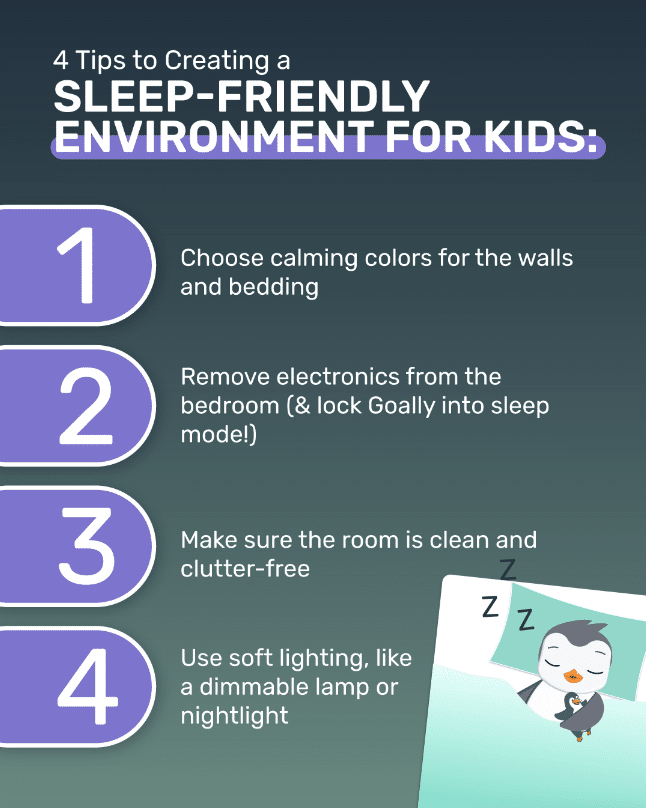Over the past century, we’ve seen a steady decline in children’s sleep, with a reduction of about 0.75 minutes per year. If you’re a parent or caregiver of neurodivergent kids or children with thinking and learning differences, you’re likely all too familiar with the nightly struggle of getting your child to stay in bed. It can feel like an uphill battle, a never-ending tug of war that leaves you yearning for a moment of peace. But don’t despair! I’m here to lend a helping hand. I’ve gathered a collection of effective strategies, honed through research and practice, to help you navigate this challenge. These methods aim to not only encourage your child to stay in their bed but also promote healthier sleep habits. So, let’s delve into these strategies together, equipping you with the tools you need to transform bedtime from a battle into a smoother, more manageable routine.
Table of Contents
Step 1: Set Up a Regular Bedtime Routine
One of the most incredible ways to get your kid to stay in bed is by having a bedtime routine that’s the same every night. Pick a bedtime and make sure your child goes to bed at that time, even on weekends. Do calming things before bed, like reading a book, taking a bath, or listening to some music. Being consistent helps your child know it’s time for sleep.
Creating a Bedtime Routine Can Include the Following:
- Brushing teeth
- Putting on pajamas
- Reading a story
- Saying goodnight to family members
- Giving hugs and kisses
Read More: Alarm Clock App for Kids

Remember, routines help kids feel secure and understand what’s expected of them which in turn helps your kid to stay in bed. Stick to the routine as much as possible, and soon your child will associate these activities with bedtime.
Step 2: Make Their Bedroom Cozy for Sleep
Help your child feel ready for bed by making their room a comfy place to sleep. Keep the room cool, dark, and quiet. You can use blackout curtains, a white noise machine, or a fan to block out noises. A soft bed with nice sheets and a favorite stuffed animal can also help your child want to stay in bed.
Some Tips for Creating a Sleep-Friendly Environment:
- Choose calming colors for the walls and bedding
- Remove electronics, like TVs and tablets, from the bedroom
- Make sure the room is clean and clutter-free
- Use soft lighting, like a dimmable lamp or nightlight
By making your child’s bedroom a relaxing space, they’ll be more likely to stay in bed and drift off to sleep.

Step 3: Talk About Fears and Worries
Sometimes, neurodivergent kids have fears and worries that make it hard to stay in bed. Talk to your child about what’s bothering them and give them comfort. A nightlight or a special “worry doll” might help them feel safe and secure.
When Addressing Your Child’s Fears, Try To:
- Listen carefully and validate their feelings
- Offer reassurance and comfort
- Share your own experiences with fears and how you overcame them
- Encourage them to create a positive bedtime story using their imagination
By helping your child face their fears, you’ll empower them to feel more confident and secure at bedtime.

See on Instagram
Step 4: Set Rules and Expectations
Teach your child that staying in bed is essential for their health and well-being. Make sure they know that nighttime is for sleeping. Set rules for staying in bed and have consequences, like losing a privilege the next day if they don’t follow them. Be consistent with these rules.
To Set Clear Expectations, You Can:
- Discuss the importance of sleep for growing bodies and minds
- Create a visual reminder of the bedtime rules, like a poster or chart
- Practice role-playing bedtime scenarios to reinforce the rules
By setting boundaries and expectations, your child will understand the importance of staying in bed and getting a good night’s sleep.
Step 5: Give Rewards for Your Kid Staying in Bed
To help your kid learn how to stay in bed, use rewards for good behavior. Make a reward system, like a sticker chart or a special treat, to celebrate when they stay in bed all night. Praise them for their efforts and let them know you’re proud of their progress.
Reward Ideas for Staying in Bed:
- Stickers or stamps on a chart
- Extra playtime or a special outing
- A small toy or treat
- Choosing a fun activity for the family to do together
Positive reinforcement encourages your child to continue their good behavior and makes bedtime a more enjoyable experience.
Step 6: Keep Trying and Be Patient
Remember that change takes time, especially for kids with thinking and learning differences. Be patient and keep trying these steps, even if it’s hard at first. With your support and consistency, your child will learn how to stay in bed and get a good night’s sleep.
How to Get Your Kid to Stay in Bed: Tips for Peaceful Nights
If you’re struggling to get your kid to stay in bed, don’t worry; you’re not alone. Here are some tricks to assist your kid in developing the habit of staying in bed throughout the night:
- Create a Consistent Bedtime Routine: Establish a regular bedtime routine that includes various calming activities like reading a book or taking a warm bath.
- Make the Bedroom Cozy: Create a comfortable sleep environment with cozy bedding, a favorite stuffed animal, or a nightlight that can help your child feel secure.
- Address Fears and Anxieties: Listen to your child’s concerns and anxieties about staying in bed with empathy. Offer reassurance and consider using visual supports or relaxation techniques to ease their worries.
- Set Clear Rules and Expectations: Clearly communicate your expectations about staying in bed and reinforce the importance of getting enough sleep for your well-being.
- Offer Rewards for Good Behavior: Implement a reward system to motivate your child to stay in bed throughout the night. You can use stickers, a chart, or small incentives to acknowledge their efforts.
- Be Patient and Persistent: Changing sleep habits takes time, so be patient and consistent with your approach. Offer gentle reminders and reinforce positive behavior to encourage your child to stay in bed.
Tips for Helping Your Child Stay in Bed
Here are some additional tips to reinforce your child’s bedtime routine and encourage them to stay in bed:
| Tips |
|---|
| Use a bedtime routine chart or checklist to help your child visually track their progress. |
| Create a calm and soothing atmosphere in the bedroom by using soft lighting, calming scents, or gentle background noise. |
| Provide extra comfort items like a weighted blanket or a special pillow to help your kid feel more secure and relaxed. |
| Encourage your child to engage in relaxing activities right before bedtime, such as deep breathing exercises or listening to soft music. |
| Stay consistent with the bedtime routine, even on weekends or during vacations, to reinforce the habit of staying in bed. |
Goally | Apps To Support Child Development
Looking for fun ways to help your child learn life skills? Try Goally! The Goally tablet comes with award-winning learning apps and video classes to help kids develop the skills they need to become independent with FUN & evidence-based practices.

Our apps teach executive function, language, emotional regulation, finger dexterity skills, and more.
As your child develops new skills, you can increase the difficulty level of the tasks in the app to challenge and motivate them even further. This helps your child grow and progress at their own pace, while also keeping them engaged and excited about their development.

In summary, helping your child stay in bed involves creating a consistent bedtime routine, making their bedroom cozy, addressing fears and anxieties, setting clear rules and expectations, offering rewards for good behavior, and being patient and persistent. By following these steps, you’ll be well on your way to peaceful nights and well-rested kids. Sweet dreams!
FAQ’s About How to Get Your Kids to Stay in Bed
How can I encourage my child to stay in bed at night? Create a consistent bedtime routine, provide a cozy sleep environment, set clear expectations, offer rewards for staying in bed, and be patient and persistent in reinforcing the behavior.
Why does my child keep getting out of bed at night? Children may get out of bed due to fears, anxieties, discomfort, or a lack of established bedtime routines. Addressing these factors can help prevent them from leaving the bed.
Are there any specific strategies to address my child's fears of staying in bed? Reassure your child, use visual supports like a nightlight or a favorite stuffed animal, practice relaxation techniques, and provide comfort objects to help alleviate their fears and promote a sense of security.
Should I use rewards to motivate my child to stay in bed? Yes, implementing a reward system can be effective in motivating and reinforcing the desired behavior of staying in bed. Consider using stickers, charts, or small incentives to recognize their efforts.
How long does it take for a child to learn to stay in bed? The time it takes for a child to learn to stay in bed can vary. It requires consistency, patience, and persistence in reinforcing the behavior. With time and practice, they will gradually develop the habit of staying in bed throughout the night.
This post was originally published on 04/12/23. This post was updated on 02/16/2024.

Goally
We help parents teach their kids life skills, like doing bedtime and morning independently. Backed by science, we incorporate evidence-based practices and expert-informed designs in all of our apps and content.






